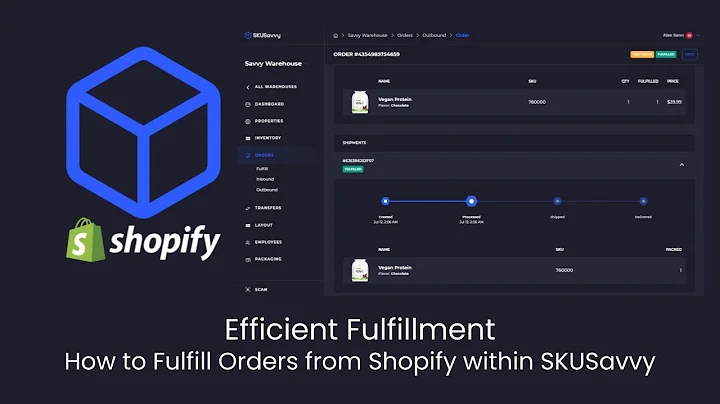Choosing the Right Payment Provider for Your Business
Table of Contents
- Introduction
- What is a Payment Provider?
- Factors to Consider when Choosing a Payment Provider
- Location
- Target Market
- Store Eligibility
- Payout Schedule
- Fees
- Available Payment Options
- Shopify Payments
- Alternative Payment Methods
- Cryptocurrency
- PayPal
- External Payment Providers
- Manual Payment Methods
- Multiple Payment Providers
- Conclusion
Choosing the Right Payment Provider for Your Business
In today's digital age, choosing the right payment provider for your business is essential to ensure a smooth and hassle-free transaction process. With numerous options available, it may seem overwhelming to pick the one that works best for you. In this article, we will explore what a payment provider is, the factors to consider when choosing one, and the different payment options available. By the end, you will have a clear understanding of how to select the right payment provider that aligns with your business goals.
What is a Payment Provider?
A payment provider is a system used to process customer transactions for your business. When a customer makes a purchase using a credit card or any other payment method, the payment provider captures the payment, processes it securely, and transfers the payout to your account. It plays a crucial role in ensuring that you receive the funds for your products or services promptly.
Factors to Consider when Choosing a Payment Provider
Selecting the right payment provider involves considering several factors that can significantly impact your business operations. Here are some key factors to keep in mind:
1. Location
The availability of payment providers depends on the location of your business. Different providers cater to specific regions, so it's essential to ensure that the options you consider are accessible in your area.
2. Target Market
Understanding your target market's shopping preferences is crucial in selecting a payment provider. By knowing whether your customers prefer to pay with debit cards, credit cards, or through alternative methods such as Apple Pay, you can narrow down the suitable options.
3. Store Eligibility
Each payment provider has its own set of rules and restrictions regarding the types of businesses they support. It is important to check if your business falls within their eligibility criteria to avoid any issues down the line.
4. Payout Schedule
The frequency at which payouts are sent varies from one payment provider to another. Before making a decision, it's essential to consider how often you need access to your funds and choose a provider that aligns with your financial management needs.
5. Fees
Fees associated with payment providers can have a significant impact on your revenue. It's crucial to examine the types of fees charged, such as transaction fees and credit card fees, as well as their rates, to ensure they are reasonable and within your budget.
Available Payment Options
Once you have considered the essential factors, it's time to explore the different payment options available to you. Here are some popular choices:
Shopify Payments
Shopify Payments is a payment provider created and supported by Shopify. It allows you to accept major credit cards, such as Visa and Mastercard, and popular digital payment methods like Apple Pay, Google Pay, Facebook Pay, and Shop Pay. Shopify Payments offers a seamless and integrated checkout experience for your customers who prefer traditional payment methods.
Pros:
- Simplified setup and integration with your Shopify store
- Built-in fraud prevention measures
- Streamlined reporting and financial management
Cons:
- Limited availability depending on your country or region
Alternative Payment Methods
If you are not eligible for Shopify Payments, you can choose from a variety of alternative payment methods. These providers enable you to process credit card transactions within your store. Additionally, some options cater to customers who prefer non-traditional payment methods like cryptocurrency.
Pros:
- Expanded payment options for customers
- Flexibility to cater to different preferences
- Support for emerging payment technologies
Cons:
- Additional account setups and integrations required
- Transaction fees may vary depending on the provider
Cryptocurrency
Cryptocurrencies, such as Bitcoin, offer fast, secure, and low-cost transactions. With cryptocurrency payment providers, you can accept digital currencies directly from customers anywhere in the world. Benefits of cryptocurrency payments include low processing fees, no chargebacks, international transactions, and simple currency conversions.
Pros:
- Global reach and accessibility
- Reduced transaction costs
- Potential for attracting tech-savvy customers
Cons:
- Volatility in cryptocurrency prices
- Limited acceptance among mainstream consumers
PayPal
PayPal is a widely used external payment provider that allows customers to make secure online transactions. It offers a seamless checkout experience, supporting credit card payments and other payment methods, both locally and internationally. With PayPal Express Checkout, customers can bypass the manual entry of payment details, enhancing convenience and security.
Pros:
- Trusted and recognized by customers worldwide
- User-friendly interface and ease of use
- Supports multiple payment methods
Cons:
- Transaction fees can be relatively high for small businesses
- PayPal's dispute resolution process might be challenging for sellers
External Payment Providers
External payment providers redirect customers to a third-party checkout outside of your online store. These providers are useful if you want to offer specific payment methods not already integrated into your website. Examples include Stripe, Square, and Braintree. While this option offers flexibility, it does remove customers from the familiar shopping experience on your site.
Pros:
- Access to specialized payment methods
- Customizable checkout experience
- Additional security measures provided by external platforms
Cons:
- Extra steps in the checkout process for customers
- Potential trust issues for customers entering payment information on another site
Manual Payment Methods
Manual payment methods, such as bank deposits, money orders, or cash on delivery, allow you to invoice customers and receive payments outside of the online store's traditional payment system. This option can be beneficial for businesses with specific requirements or for those operating in regions with limited access to digital payment methods. However, it requires additional organization and may result in delays in receiving funds.
Pros:
- Flexibility for unique payment requirements
- Offline payment options for customers
- Control over the payment process
Cons:
- Increased administrative work for invoicing and tracking payments
- Potential delays in receiving funds
Multiple Payment Providers
In many cases, businesses choose to offer multiple payment providers to their customers to provide flexibility and accommodate various preferences. By using a combination of payment options, customers can choose the method that suits them best, ultimately leading to higher conversion rates and customer satisfaction.
Pros:
- Enhanced customer experience and convenience
- Expanded reach to different customer segments
- Mitigation of risks associated with relying on a single payment provider
Cons:
- Additional setup and management required for each provider
- Increased complexity in financial reporting and reconciliation
Conclusion
Choosing the right payment provider is a critical decision for any business. By considering important factors such as location, target market, store eligibility, payout schedule, and fees, you can narrow down the options. Additionally, understanding the variety of payment options available, such as Shopify Payments, alternative payment methods, cryptocurrency, PayPal, external payment providers, manual payment methods, and the possibility of using multiple providers, will allow you to tailor your payment process to meet your business and customer needs. Remember, a well-chosen payment provider can significantly enhance the overall shopping experience for your customers, boost your sales, and contribute to the growth of your business.






















